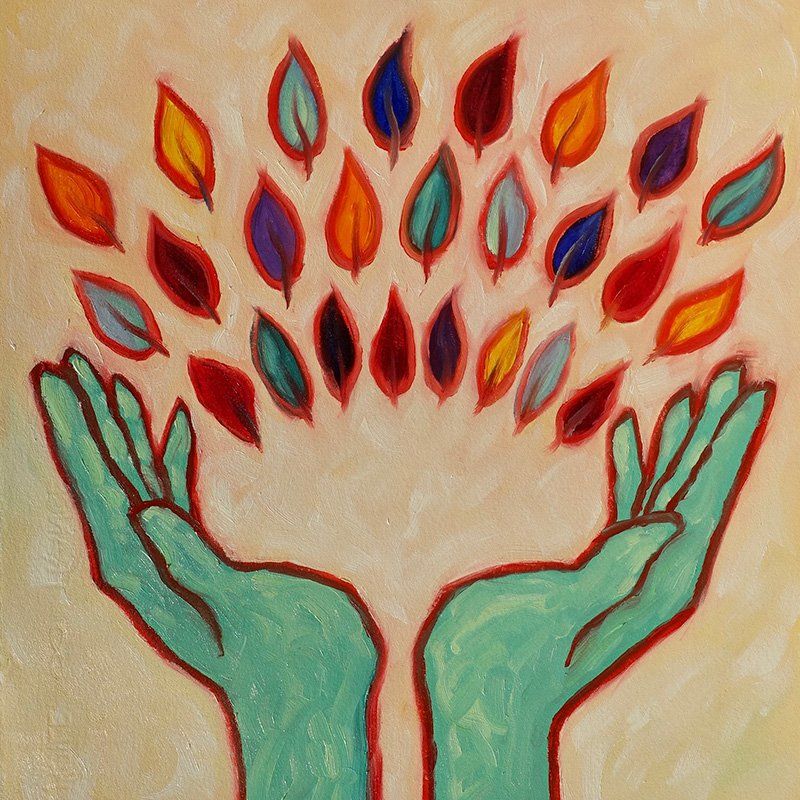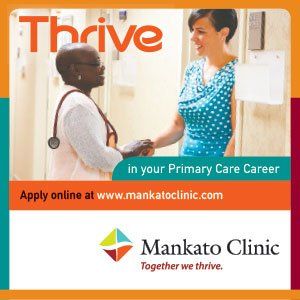significant part of each of our health is determined by what happens outside of a health care office or hospital. Some estimates suggest that as much as 80% of health status can be attributed to non-medical factors. This is why medical care alone is insufficient for achieving better health outcomes. I am a pediatrician and adolescent medicine specialist. From the time I started working in health care, I was always interested in the context in which the patients I served existed; how their health was affected by what would now be called the social drivers of health. While studying public health, I became interested in the health of populations and, again, the context in which they existed. Over the years, my approach to care has evolved. I began by trying to understand the lives of my patients outside of the clinic room, changed to understanding and addressing social drivers, and now recognize that unless we address the root causes of social drivers, there will not be sustained improvement in the health of those we serve.
cover story one
The Moral Law Within
Care beyond medical services
By JULIA JOSEPH-DI CAPRIO, MD, MPH
For many diagnoses, we should consider societal and structural elements, what Dr. Rishi Manchanda, the CEO and founder of Health Begins, describes as community-wide social determinants of health and the causes of those social elements, the structural determinants of health. Examples would be supermarket redlining as a structural determinant of health and a food desert as a social determinant of health. The social risk factor that would then appear as a result of these is food insecurity. In order to be more effective clinicians, we must address the social risk factors. Further, sustainable improvement on the health of populations requires addressing the social and structural determinants of health.
The business imperatives for this approach are clear—health care costs are reaching unsustainable levels. Nevertheless, the greatest reason to change is a moral one. I know little about philosophy, but I have thought a lot about Don Berwick’s 2020 Health Affairs Viewpoint, “The Moral Determinants of Health” that begins with a reference to the 18th century philosopher Immanuel Kant and the “moral law within.” What Dr. Berwick notes is that the research is clear on what is needed to improve health, but societies don’t invest in those things—for example, shunting more of health care spending to what will prevent illness, such as addressing the high rates of incarceration in Black and other diverse communities or supporting elders suffering from loneliness, versus paying to repair the effects of a lack of investment and disinvestment in what is known to improve health. The pressures that ensure the status quo are powerful. But the more powerful force would be if more of us, including those of us working in health care, attended to the “moral law within,” advocating for what is right even if it is not immediately in our personal or organizational best interests. This approach would result in improved and equitable health outcomes.
Medical care alone is insufficient for achieving better health outcomes.
A Framework for Better Care
There are frameworks that can be used to improve the health of populations through the implementation of strategies beyond medical care and which can address health inequities. One I worked on with colleagues at the Alliance of Community Health Plans while I was a senior vice president and the chief medical officer for UCare recognizes that health inequities are due to a complex web of social and structural factors and is a framework that can be used by healthcare providers. The framework begins with identifying at least one equity issue to fully address, then using data and analytics to identify root causes—and solutions for those root causes that act at the individual, community and systemic levels.
The individual level involves work within your immediate sphere of influence—your patients. An example might be addressing the issue of poor pregnancy outcomes by identifying pregnant people who are at risk for an adverse health outcome and reaching out to them to connect them to their health plan for care management support. At the community level, organizations work with others to make a community-wide impact. Using the same pregnancy outcome example, a health care organization may use philanthropy to support a community-based organization that provides doula services, which have been shown to improve health outcomes. At the systemic level, health care providers might choose to advocate for insurance coverage of doula care.
As you assess your patients and determine that, in addition to providing medical care, they need other supports, there are many community-serving organizations you can access which can serve as resources for your patients. For example, the Wilder Foundation African American Babies Coalition has a number of initiatives to foster the healthy development of Twin Cities’ African American babies that include the Integrated Care and High Risk Pregnancy Initiative (ICHRP). This initiative connects parents and families to needed resources at NorthPoint Health & Wellness Center in Minneapolis, the Ramsey County Care Collaborative, and other resources in Ramsey County. ICHRP also trains others, including health care providers, on how to provide culturally relevant care to diverse communities.
Another example of a Minnesota community-serving organization providers can support and refer patients to is Juniper. It is actually a network of organizations across Minnesota that offer evidence-based health promotion programs for adults that include falls prevention, fitness classes and programs that provide education on how to live well when aging or if living with a chronic health condition. Many of Juniper’s offerings are free, ask for a donation or in some cases are a covered insurance benefit. For example, Tai Ji Quan: Moving for Better Balance, is an evidence-based falls prevention program offered through Juniper. It is available online and in person at various sites across Minnesota.
Many providers have changed how they practice and now determine whether patients need health promotion services similar to those Juniper provides. Also, providers are increasingly assessing patients for social drivers of health in order to connect them to community-based resources that can address the social need. An example of this is asking about food insecurity by asking a patient or family if they worry their food will run out before they have the resources to buy more, then giving them information about available food shelves and where to get information about supplemental nutrition benefits.
Incorporating a New Approach
Assessing for social drivers of health is integral to the work of Leap Pediatric and Adolescent Care, a St. Paul practice I recently started. We focus on advancing health equity and removing barriers to health and wellness, in part through collaborations with local county public health and community-serving organizations.
Before the pandemic, families were resilient even in the face of significant barriers; however the pandemic has made it more difficult for them. I can walk from my home in St. Paul to neighboring areas where many people have no regular source of health care, including pediatric and adolescent care.
Advocate for an approach to health that is beyond and more effective than medical care.
St. Paul is diverse. Almost 50% of us are Black and/or of Indigenous communities, Asian, or Hispanic. Twenty percent are foreign born, and 30% speak a language other than English at home. Unfortunately, one in five St. Paul children live in families with incomes below the poverty level. Many children in St. Paul are behind on their well child visits and immunizations. Children with chronic medical problems in some St. Paul neighborhoods are more likely to be hospitalized for their condition when compared to children living in an adjoining neighborhood.
Access to care is challenging. There is very little to no pediatric/adolescent primary care in many areas of St. Paul, known as Health Services & Resources Administration Primary Care Health Professional Shortage areas. Leap Pediatric and Adolescent Care is located in one of these areas and commits to identifying and addressing social drivers of health.
We also commit to having a staff that represents the patients, families and communities we serve. Studies have shown that patients from Black, Latino and Indigenous communities are more likely to trust health care systems that have doctors and staff with similar cultural experiences. This trust can lead to improved health outcomes. I’m one of the few Black doctors in Minnesota, and over the years, families have said they brought their children and adolescents to me because I am Black. However, it is challenging and takes time to build trusting relationships with patients, even if you do have common cultural and social experiences. Many people in the U.S. distrust health care organizations and doctors. In fact, before the pandemic, one survey found that less that 60% of participants from the U.S said that doctors can be trusted. Fewer people from diverse communities trust doctors, and many report being treated unfairly by health care systems.
Building Trust
Trust with patients can be built. It requires consistently showing we care about them and will give them the time required to meet their needs. I remember a patient experience leader advising me to always ask a patient and family if there was anything else I could do for them before I exited the exam room. I have found that asking this question very rarely added significant time to the visit and gave patients and their families a moment to make sure we had discussed what was important to them. The same approach of asking how we can be of service is useful if a provider or health care organization hopes to enter into a relationship with a community and community-serving organizations.
We also build trust with patients and communities by providing culturally congruent care. Cultural congruence involves learning about the cultural beliefs and values of the individuals and communities being served and being open to integrating those beliefs and values into the care we provide. I recently spoke to a health care leader and mental health practitioner who asks patients whether they use or would like to incorporate traditional healing practices into their care. She has found some patients achieve better outcomes when traditional healing is used alongside our conventional mental health treatments. I asked her how she knows where to send patients who want to incorporate traditional healing practices into their care plan and don’t know a good source of this care. She said she asks people in those communities for recommendations —– they know the best healers to recommend.
The pandemic, our profound health disparities, the widespread lack of trust in health care—these all indicate the need to change how health care functions in Minnesota and the U.S. This change is necessary, so we are mandated to allocate more money and attention to the causes of poor health and to the practices that promote wellness. Systems need to be built that address the social drivers of health, connect patients to health promotion services, humbly partner with community-serving organization and build trust with the communities we serve. Such systems are possible if we all attend to the “moral law within” and advocate for an approach to health that is beyond and more effective than medical care.
Julia Joseph-Di Caprio, MD, MPH,
is president and founder of Leap Pediatric and Adolescent Care. She has also served as senior vice president and chief medical officer at UCare and held several physician leadership roles at Hennepin HealthCare.
MORE STORIES IN THIS ISSUE
cover story one
The Moral Law Within: Care beyond medical services
By JULIA JOSEPH-DI CAPRIO, MD, MPH
cover story two
Care Coordination: Improving patient satisfaction and engagement



















